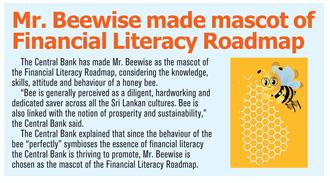Reply To:
Name - Reply Comment
By Nishel Fernando
|
Central Bank Governor Dr. Nandalal Weerasinghe and UNDP Sri Lanka Resident Representative Azusa Kubota hold Financial Literacy Roadmap PIC BY NIMALSIRI EDIRISINGHE |
The Central Bank on Tuesday launched Sri Lanka’s first-ever Financial Literacy Roadmap (2024-2028), in particular targeting to promote financial literacy among the youth and women in the micro, small and medium enterprise (MSME) sectors.
The four-year roadmap was developed under the Financial Literacy and Capacity Building pillar of the National Financial Inclusion in Sri Lanka.
The roadmap aims to serve as guidance for all financial literacy service providers in the country, offering directions to achieve such behavioural changes towards a financially literate Sri Lanka.
The new Central Banking Act entrusted the Central Bank with promoting financial inclusion in Sri Lanka.
“Financially literate individuals make informed decisions about savings, investments and borrowings. They are more likely to understand monetary policy decisions that we take and respond appropriately, in line with the monetary policy stance, contributing to effective policy implementation,” Central Bank Governor Dr. Nandalal Weerasinghe said.
literate individuals make informed decisions about savings, investments and borrowings. They are more likely to understand monetary policy decisions that we take and respond appropriately, in line with the monetary policy stance, contributing to effective policy implementation,” Central Bank Governor Dr. Nandalal Weerasinghe said.
He also emphasised that the financially literate consumers are likely to demand an efficient, transparent and responsible culture from financial institutions, which would ultimately enhance the confidence in the financial system.
“… financial literacy will increase public trust in the financial system by supporting individuals to understand how the financial system works. This understanding is very important for the public to make informed decisions and build credibility and trust in the system,” he added.
In addition, Dr. Weerasinghe viewed financial literacy as a necessary tool for the public to safeguard themselves from financial fraud and abuse, which is on the rise, with the technological advancements.
According to a survey, financial literacy in Sri Lanka stood at 57.9 percent in 2021, up from 35 percent in 2014. Despite the higher levels of financial knowledge, the Financial Literacy Roadmap noted that financial behaviour remains low. In addition, there was a gender gap in financial literacy, with 61.1 percent of males vs 55.2 percent of women being financial literate UNDP Sri Lanka Resident Representative Azusa Kubota assured the UNDP’s assistance in promoting financial literacy, in particular among the vulnerable social groups.
“We will extend technical expertise in developing financial literacy-related modules, design advocacy campaigns for the financial literacy brand and disseminate content, in particular among the young people and women working in the MSEMs,” she said.
Meanwhile, Dr. Weerasinghe noted that ultimately higher financial literacy would help to reduce indebtedness, alleviating poverty, leading to higher standards of living among all Sri Lankans. He pointed out that the government would also be able to cut expenditure on social safety nets, with these developments.
“In the long run, this will help the government in terms of reducing the burden of social safety nets and help people to come out of poverty and have better living conditions,” he said.